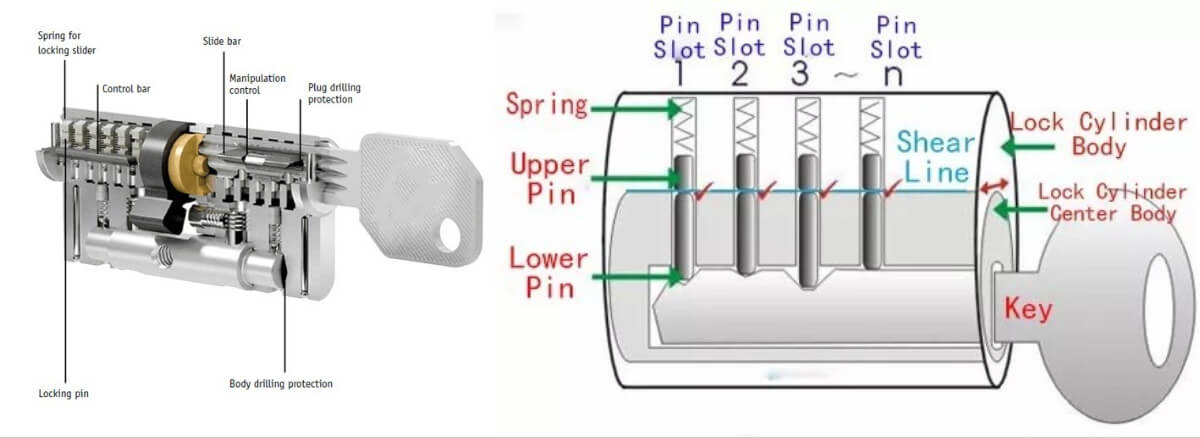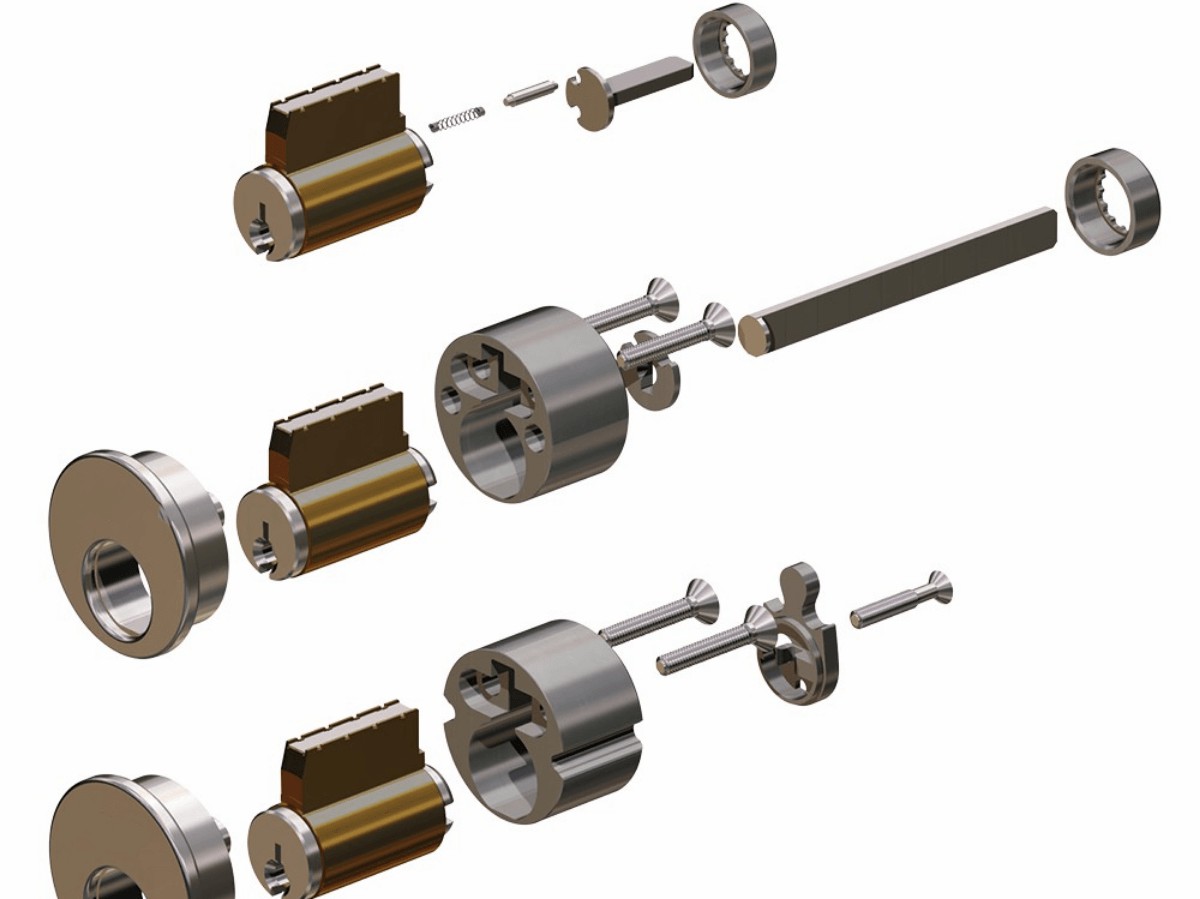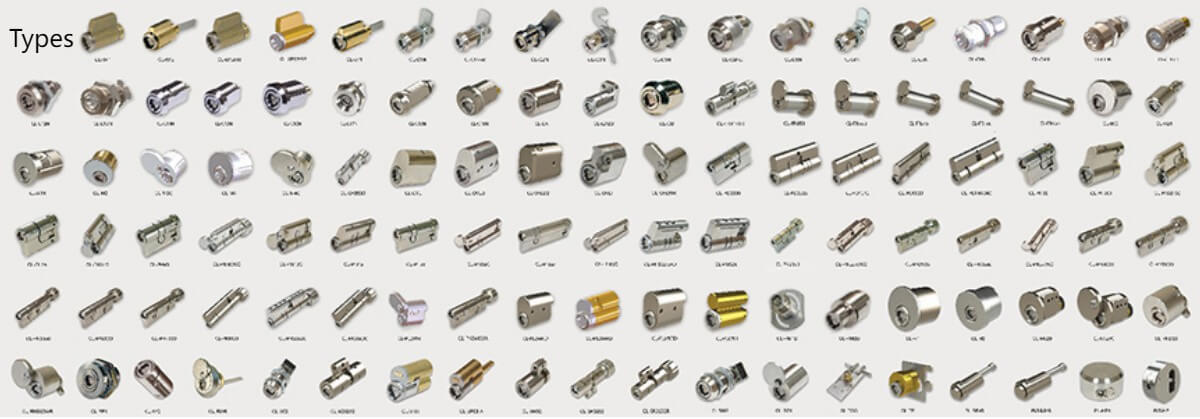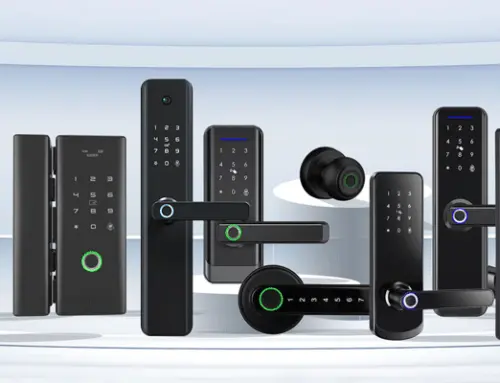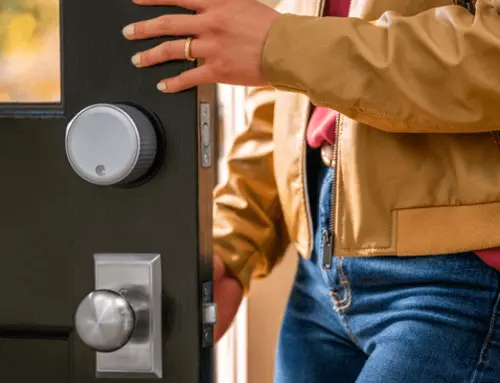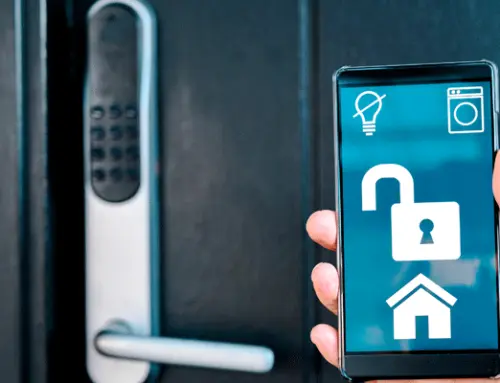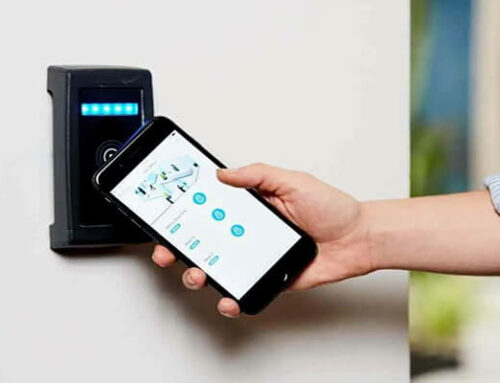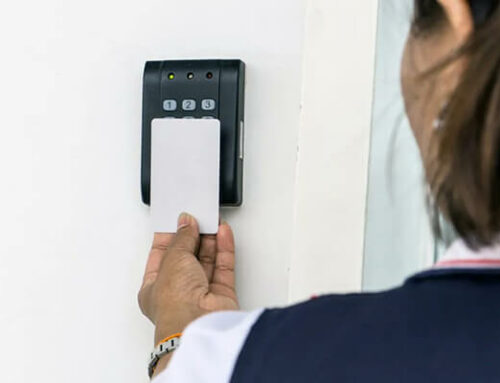I believe you must have used or seen a cylinder lock. So do you know the cylinder lock? In today’s guide, we will answer all your questions about cylinder locks. Whether you want to know the definition, how it works, or the types, you’ll find it all here. Read on to learn more.
1. What is a cylinder lock and how it works
A cylinder lock, as the name suggests, is shaped like a cylinder. A lock whose latch or bolt locking mechanism is contained in the hole portion by drilling two round holes in the door. You can open it with one or more keys. Generally used in room door locks, garages, etc. Cylinder locks are very popular these days due to their ease of repair when you don’t need any extra hassle or need to remove the bolts from the door. And it’s cheap to replace a few screws or pins.
There are many sets of pins inside the lock body of the cylinder lock and the length of each pin is inconsistent. When you insert the correct key into the keyhole and turn the key in the correct direction, the pin turns as well. When all the pins are properly aligned, the cylinder will turn and move the bolt, thus opening the door. Since the pin is hidden inside the lock, most people will have difficulty moving the plug without the correct key.
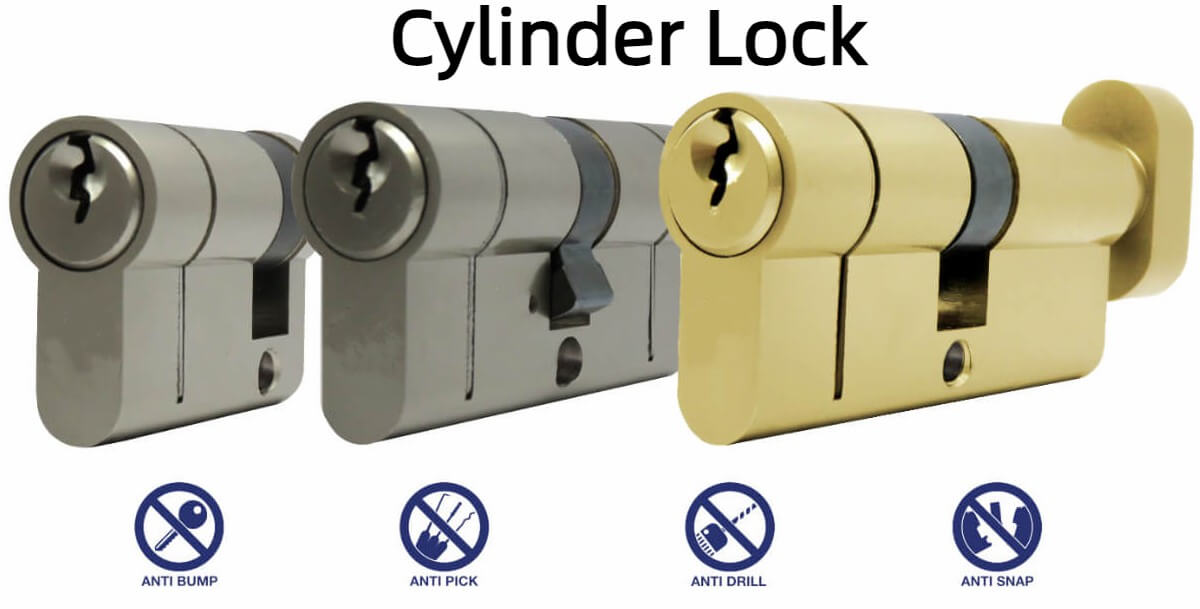
2. History of cylinder lock
The cylinder lock was developed by German-born engineer Walter Schlage Invented in 1923. In fact, in order to pursue a more efficient locking method, people invented the cylinder lock. Because the volume of the previous mortise lock and the lock housing is large, a hole needs to be hollowed out on the door during installation, and the installation process is complicated, which is very inconvenient. Later, Yale University further improved the cylinder lock and applied for a patent for it. It was introduced to the American public in 1865. Known as “Cylinder Lock”.
Although more complex than a cylinder lock, a mortice lock can provide more functionality than a cylinder lock. A mortice lock, for example, might include the deadbolt in a single unit, while a cylinder lock would require separate faces for the deadbolt and door handle. All in all, the invention of the cylinder lock provided further convenience for the installation of door locks at that time.
3. Function of cylinder lock
Below we analyze the eight functions of the cylinder lock for you.
1) Lock the entrance
Installing a cylinder lock at the entrance of the door can have the function of locking the entrance. It locks by pressing and turning a button until someone presents the correct key or manually unlocks the interior button to unlock the door. In addition, it provides an inner button lock function, which locks the outer knob or lever with the push of a button.
2) Channel device
In fact, the passage function is not really a lock, it just has latches on both sides of the door to keep the door closed.
3) Storage room function lock
A pantry function lock has a fixed external knob or lever, and the latch is retracted externally by a key. Internal knobs or levers can always be withdrawn instantly.
4) Classroom function lock
Cylinder locks installed in classrooms can always control the door lock by key, no matter from the outside or inside. This is conducive to ensuring the safety of students.
5) Privacy function
A cylinder lock privacy lock does not contain a cylinder and does not have a key, however, for privacy, this type of lock can be locked from the inside. Typically used in public restrooms, residential bedrooms, or bathrooms.
6) Dual key function
Dual key functionality means that there are lock cylinders on the inside and outside of the door, meaning that keys can be used on both sides.
7) Keyless communication
Keyless communication means always unlocking from the inside knob, with a blank plate on the outside.
8) Communicate with the key
4. What components does the cylinder lock consist of?
A cylinder lock consists of a cylinder core, housing, lock chassis, separate latch bolt, operable trim (lever or knob), and a rose behind the trim. The cylinder core contains the lock cylinder, and only the corresponding key can turn the lock cylinder. There are also many pins and springs of different heights inside the cylinder. The pin is responsible for preventing the lock cylinder from turning when the lock cylinder is locked, and the spring is used to hold the pin in place. The shell of the cylinder lock contains all the structures of the lock and plays a protective role. The lock chassis is used to attach the door and lock together through bolts. When a lever or knob is keyed, the cylinder is located within it. A lever or knob facilitates keeping the door locked.
5. Advantages and disadvantages of using a cylinder lock
Cylinder locks, like other locks, have both advantages and disadvantages. In the following section, we will examine its advantages and disadvantages.
1) Advantages
- Very easy to install: As mentioned above, cylinder locks are very easy to install, requiring only a few small holes to be drilled into the door. This makes it superior to other doors.
- Ease of Replacement: Yes, since installation is easy, replacement is not a difficult task. Because it only works with a pin and tumbler, you don’t need to remove the entire lock to replace it. After the key is lost, you can easily replace the key. This could make it a more attractive option for business owners with employees who occasionally need to rekey their locks.
- Optional: You can choose single cylinder lock or double cylinder lock according to your actual needs. Single cylinder locks require only one key to open on the outside, double cylinder locks use a key to open both inside and outside, providing a greater degree of security for your home.
- High Security: A cylinder lock provides a high level of security if combined with an entry door handle.
- CUSTOMIZABLE: Cylinder locks are available in many different styles and variations of door handles with pre-installed cylinder locks. This means you can easily customize the look of the doorknob to match the design of the door or room it is installed in.
2) Disadvantages
- Easy to pick: It is easy for a repairman to pick the pins in the cylinder lock when repairing, which means that if some thieves know how to do it, it is easy for them to pick the lock as well. Even though double-cylinder locks provide double security, you still have to worry about this. Protect your residential facility from potential threats and risks.
- Cam use: Another downside of cylinder locks is that if your cylinder lock doesn’t have a deadbolt installed, you may need two keys to open the door if you choose to upgrade your door’s security in the future, which can be annoying. trouble.
- Not durable: If you use a cylinder lock in a high-traffic office space, it will be less durable than a mortice lock.
6. Types of cylinder locks
There are many types of cylinder locks, and you need to have a good understanding of the types of cylinder locks before you buy them.
1) European cylinder lock
The Euro cylinder lock is one of the most widely used door locks in the UK. Some Euro-style locks have five pins, while others have six. The latter cost a little more, but offers an extra level of security. It is available in a variety of sizes and is widely used in residential and commercial properties. At the same time, there are many types of Euro cylinder locks, including half Euro cylinders, double Euro cylinders, thumb turn Euro cylinder locks, and anti-break Euro cylinders.
2) Oval cylinder lock
The popularity of oval cylinder locks is not as high as that of European cylinder locks. In contrast, oval cylinders have a more limited size range and are not easily replaceable.
3) Edge cylinder lock
The edge cylinder lock is simply fixed to the surface of the door with screws, so it is generally not used as a door lock for large doors. It is generally installed in the passage to play the role of an obstacle. Edge cylinder locks are also often used on bathroom doors in the home for added privacy and aesthetics.
4) Double-cylinder lock
Double-cylinder locks have cylinders installed on both sides of the door and require two keys to open the lock, which greatly increases the security of the house. It is usually installed on the door next to the window so that even if a burglar smashes the window pane, they cannot enter the house. However, National Fire Protection Association (NFPA) Life Safety Code 101 prohibits the use of double-cylinder locks on exit doors. Because after installing these locks, in the event of a fire, it is difficult for the owner to leave the house immediately.
5) Mortise cylinder lock
Although mortise cylinder locks look a lot like edge cylinder locks, there are differences. Mortise cylinders have a threaded exterior and a cam, while edge cylinders have a rod and a bolt. In addition, the mortise cylinder lock is mounted inside the door and is not easily seen. Edge cylinder locks, on the other hand, are mounted on the outside of the door as a barrier.
(More information about Mortise Lock: Mortise Lock: A Full Guide)
7. How to install the cylinder lock
First of all, before installation, you need to prepare tools: cordless electric driver, screwdriver, cylinder lock assembly
1. Use the iron piece attached to the cylindrical lock fitting to remove the handle, and insert it into the small hole under the handle.
2. According to the previous step, the handle can be easily unscrewed.
3. Use a flathead screwdriver to pry up the gasket behind the grip.
4. To loosen the ball lock’s fixing screws, use a cross screwdriver or an electric screwdriver.
5. Take out the lock from the other side of the cylinder lock.
6. To remove the lock bolt, use an electric screwdriver or a cross screwdriver.
Looking at the handle of the lock in the opposite direction, there is a small hole in the small part of the handle, insert a hard and thin thing (such as an iron nail) to withstand it firmly and pull the handle ball to pull it out. Then turn the disk that is stuck on the door counterclockwise, and you will see two screws. Use a cross screwdriver to remove it, and you can pull out the cylindrical lock cylinder from the opposite side.
8. Global cylinder lock market
According to statistical surveys, the global cylindrical door lock market will reach 100 million yuan (RMB) in 2023. The cylinder lock market is expected to grow at a growth rate of 5.5% during the period 2021-2028, reaching USD 5,678.34 million by 2028. North America, South America, Asia Pacific, and Europe, Middle East & Africa constitute the global cylinder locks market by region.
North America is expected to be a lucrative market for cylinder lock manufacturers. Over the forecast period, the North American market is expected to grow moderately. Continuous product innovations and rapid developments in the integration of various raw materials in the production of cylinder locks can be attributed to this growth.
The development of the cylinder lock is due to its advantages. Its unique properties set it apart from other forms of locks. As said above, this lock has many functions and uses, so it has won people’s favor. A final use for a lock is to attach a knob or lever that retracts once turned or ironed. In addition, the development of cylinder locks also benefits from the improvement of people’s safety awareness. Choosing a double-core cylinder lock can increase the security of enterprises and residences.
However, it also has limitations such as high cost, the content of cylinder door locks, and advancements in digital locks with advanced security systems enabled through tissue layers or finger scanners. However, this is an opportunity for innovative profit with higher business opportunities globally through growing channels, through new styles, technological innovations in cylinder door locks, and merging business with the safety and security response division.
9. Frequently asked questions about cylinder locks
Below are some frequently asked questions about cylinder locks.
1) Which one has a higher security level, cylinder lock or lever lock?
Compared with the 5-bar lock of the lever lock, the security level of the cylinder lock is higher. Standard cylinder locks offer over 3000 different keys. A master keyed cylinder provides up to 10 000 lock cycles. So it’s unlikely that there’s a key around here that can open your lock. If you want added security, it is recommended that you can install a cylinder lock on the front door and a lever lock on the inside door.
2) What are the signs that the cylinder lock is faulty?
- After inserting the key, the lock cylinder cannot be turned.
- The door handle cannot be turned when unlocked.
- The key is not smooth when turning and it is not smooth when taking it out.
- When you accidentally spill water on the door lock.
All of the above situations are symptoms of a faulty door lock, which means that you need to replace the lock cylinder as soon as possible.
10. Conclusion
After reading this guide, you must have a certain understanding of cylinder locks. When choosing a door lock, you need to choose the right cylinder lock based on the level of security needs, type of facility, traffic flow, budget, and door type. Hope this article can help you, if you want to know more about cylinder locks, please contact iLockey.

